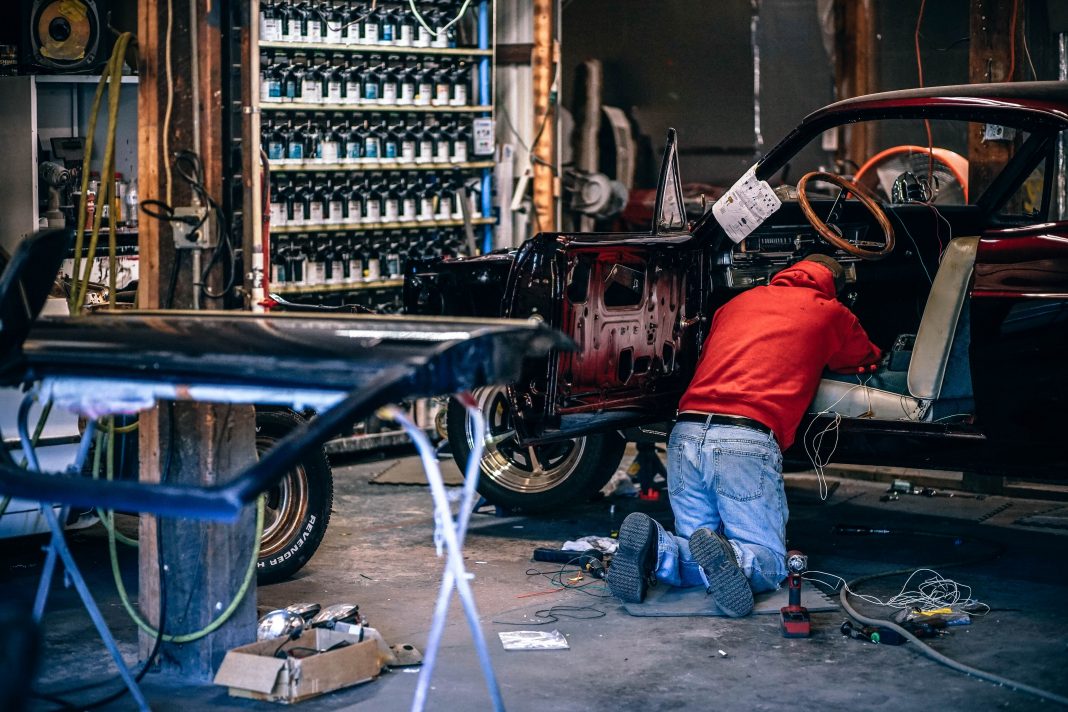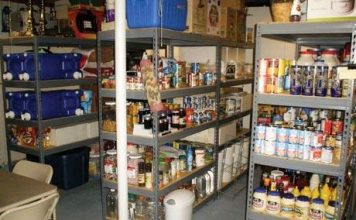 |
|
| Issue #113 • September/October, 2008 |
It has been said the United States is a “carbon economy” meaning that our economy and standard of living depend on the availability of fossil fuels which include petroleum, natural gas, and coal. It’s true and, despite the efforts of environmentalists, it’s not likely to change too soon.
Today, however, we’re locked in a period of escalating prices of petroleum-based products, and the services and commodities that depend on them, including food.
That’s the bad news and it seems as if darker days are coming. But, believe it or not, there are a lot of things to be optimistic about, but that depends on whether we take advantage of the assets we, as a nation, have.
The talk today is about how we’re running out of oil and natural gas, which is true, but probably not as fast as you think. On the other hand, regardless of how fast petroleum and natural gas are disappearing, we have assets which can replace them, but for one reason or another, we don’t talk about them. One of these assets may surprise you: coal.

What do you know about coal? While writing this, I asked several people when they last saw a lump of the stuffand asked them to spare me the Christmas stocking jokes. Most people had to pause because they couldn’t remember. Ten? Twenty years ago? Maybe longer. Some couldn’t remember ever having seen a lump of coal in their lives.
Yet, coal is one of the most important fuels we have and, believe it or not, we have more of it than anyone else in the world. You know all the things we make with petroleumgasoline, plastics, industrial chemicals, fertilizers, and more. We can make those from coal, too. Yes, even gasoline, once the price is right. And the rising price of petroleum has now made the cost of gasoline-from-coal economical.
But we can’t do it today because we’ve dragged our feet on setting up the industrial base to fully exploit coal as a resource, including processing it to make our own gasoline and heating oil. Which is a shame, for it is because we can’t replace petroleum that the Organization of Petroleum Exporting Countries (OPEC) has been able to manipulate the price of a barrel of oil. Had we been realistically addressing the energy problems confronting us right along, the cost of a barrel of oil would be nowhere close to where it is. As it is, we’ve shackled ourselves with our current policies, and we’ve allowedno, artificially createda near-monopoly for the OPEC countries. And they have now discovered they can use that monopoly to hold us economic hostages.
But, despite today’s outrageous petroleum prices and the problems they’re creating, I’m cautiously optimistic about our chances to emerge from these troubled times healthier than we are now. However, I’m pessimistic about whether we’ll actually do it.
The obstacles to a brighter future for the United States are not technological, but political, and the real problem is that we, the American people, and our elected officials have been putting obstacles in our own way. We’ve tied our own hands on drilling for oil and natural gas, we’ve brought the construction of new nuclear reactors to a standstill, and though coal-to-liquids (CTL) fuels were perfected decades ago in other countries, we ignored it even when OPEC was flashing the first signs that they intended to crucify us on barrels of oil.
In this first installment I’ll present the major fossil contributors to our energy: oil, coal, and natural gas and their substitutes. I’m also going to talk about the “energy independence” of which many politicians and energy gurus speak. I think I’ll have some surprises for you.
In the next installment I’ll discuss nuclearboth fission and fusionand explain why both are actually safer than fossil fuels and how we have to return to building new fission reactors until fusion reactors can come on line, if they ever can.
|
In the third installment I’ll discuss alternative energy including solar, wind, tidal, and others. Some, such as solar and wind, are not likely to be big contributors to our national energy picture in our lifetimes. Maybe never. But they can be major contributors to your energy picture if you’re a self-reliant type. I’ll even discuss hydro, and though there isn’t an awful lot of room for more of it as far as our nation is concerned, there may be a place for it on the homestead.
Energy independence
Let’s talk about energy independence:
It ain’t gonna happen.
It’s as simple as that. I’m going to go out on a limb and say it’s not necessarily desirable either. Consider coal and you’ll see why.
The United States holds the world’s largest coal reserves. Half of our electricity is generated by burning it. Yet, we still import it.
Why? The biggest expense in coal is often the shipping, and for some coal-burning electric plants on our coasts, it is cheaper to bring it by ship from a foreign country than it is to bring it by train, barge, or pipeline (yes, coal can be sent through pipelines) from another part of our own country. So, it’s simply economics. We have all the coal we need, but in some cases, it’s still cheaper and smarter to import some.
Food’s the same way. If you like coffee, bananas, and commodities such as those, which are all but ungrowable in the United States, you’ll realize we should import some of our food. Yet, because we are one of the major food producers on the planet, no one can hold us hostage. If the price of Argentine beef goes up, we can buy American because we grow all the beef we want.
With energy, we should strive for the same “independence.” Had we developed some of the critical energy options we’re struggling to find now, OPEC wouldn’t have dared raise prices the way they have recently. But we didn’t, and they did.
One of the reasons we have to import so much oil at outrageous prices is because we’ve depleted many of our oil fields, but another reason is that we’ve handcuffed ourselves by not allowing ourselves to access petroleum in the Arctic National Wildlife Refuge (ANWR), offshore along our coasts, the oil locked up in shale in the West, and that which is buried beneath the international waters that make up the Gulf of Mexico.
But worse, we’ve shunned two of the most promising options for energy self-sufficiency, coal and nuclear power, despite the fact we are the largest energy consumers in the world. It’s no wonder we are now hostages to OPEC. In retrospect, I’m surprised it didn’t happen sooner.
Let’s look at the first part of the energy picture: the carbons.
Petroleum
Petroleum is the weakest link in our energy chain, simply because our lifestyles depend so much on it, and it’s the one we must depend on foreign countries to supply.
No one really knows how much recoverable oil is left in the world. One of the figures bandied about is that today there’s about 40 years of it left in “recoverable” reservesif consumed at current rates. However, this figure is disputed because previous dire predictions of running out of petroleum have proven to be wrong. And, even as the so-called recoverable reserves seem to diminish, new extraction methods are constantly converting once unrecoverable oil into recoverable oil. However, it’s still likely that recoverable reserves of easily obtained petroleum will run out. They’ve got to. But this doesn’t mean we will leave a petroleum economy soon.
Reserves
|
When we talk about petroleum, there’s a difference between the oil in the ground and how much of it can be recovered. The oil estimated to be in the ground is often called “oil in place,” while that which can be extracted economically, using technology of the day, is called “reserves.” The ratio of what is currently recoverable to the oil in place is called the recovery factor.
When estimating how much oil is in the ground, the P90 method is used. It is an estimate, thought to be about 90 percent accurate, of the minimum amount that is recoverable at current prices with current technology. However, it is the minimum and often there turns out to be more. Sometimes there’s two or three times as much there.
So, as the price of petroleum rises, as it is today, and the efficiency of the extraction technologies improves, the reserves are adjusted up, and even fields that were once deemed depleted suddenly become promising and will eventually be listed as having reserves.
It seems then, that talk about reserves should be straightforward. But the fact is, the discussion is often politically charged and, believe it or not, it’s also often a closely guarded state secret. So, often, we can only guess at what the reserves are in many countries. Two years ago an internal memo in the Kuwait Oil Company “revealed” that their oil reserves are only half as big as was previously thought. Was the memo genuine? We don’t know. Lower reserves would mean there’s less of a supply and the price would go up accordingly. But even the perception there isn’t as much would make the price go up.
But knowing the “official” figures for the world’s oil reserves doesn’t present a full picture. What’s usually left out of reserve calculations are other oil sources such as Canada’s oil or tar sands and this country’s oil shale.
Oil sands and shale oil
|
Canada holds about 81 percent of the world’s known oil sands and the recoverable oil in them ranks them second only to Saudi Arabia’s conventional reserves. And according to the United States Department of Energy (DOE), the amount of recoverable shale oil in the world with current technology is estimated at three trillion barrels, more than all the known reserves of conventional oil in the world. And roughly a quarter of that total is here in the United States, most of it in Colorado, Utah, and Wyoming.
At the moment, however, for “environmental” reasons Congress has made most shale oil inaccessible. If we were to fully develop our oil shale, estimates are that we would have more than 100 years’ supply at current consumption rates.
What’s the break-even price to extract oil from shale? The DOE estimates it to be $55 to $70 per barrel. The price of a barrel of crude from OPEC at this writing is almost $150 per barrel.
Drilling our own
I’ve already pointed out there are huge reserves of conventional oil in the Arctic National Wildlife Refuge in Alaska, along the coast of the United States, and in the Gulf of Mexico. No one knows how big these reserves are and some estimates are that they exceed the reserves in the Middle East. Not likely, but it’s possible. But, because of environmental concerns, Congress has made it unlawful for Americans to explore or drill there.
But Congress has no authority over what foreigners do, so other countries, including Mexico, Venezuela, and China are planning to drill in the Gulf. If the price of oil goes higher, maybe they’ll even sell us some of it…oil from our own backyard, the Gulf of Mexico. And we’ll pay $150 a barrel for it. Wouldn’t that be a hoot? (Today, as I write this, President Bush has lifted the Executive Order banning offshore drilling.)
Refinery capacity
Last in the list of problems we’ve caused ourselves in our search for “petroleum independence” is a lack of refinery capacity.
No new refineries have been built in the U.S. in more than 30 years, and there are now fewer than half as many as there were a quarter of a century ago.
Even the Arabs have pointed out that they can’t ship us more crude because we no longer have the capacity to process it all. At federal, state, or local levels, and sometimes combinations of the three, we won’t allow more refineries to be built. However, more and more refineries are currently being built in the Middle East.
The obvious start to solving many of our energy woes is to drill for more domestic oil, start developing shale oil, and begin building more domestic refineries.
Natural gas
Natural gas is another fossil fuel. It is found in oil fields, in coal beds (as coal-bed methane, the gas commonly associated with coal mine explosions), and it is also found alone in natural gas fields.
Natural gas is actually a combination of gases that include methane, several types of butane, ethane, several types of pentane, and propane. It is also often mixed with other chemicals including hydrogen sulfide, nitrogen, helium, and other elements. In fact, the world’s production of helium is the result of the alpha decay of radioactive elements within the earth. There it becomes trapped with natural gas and stays in those pockets. All the helium we use, whether for balloons, medical and industrial uses, or just to talk like a duck, is a by-product of the processing of natural gas.
Natural gas has many of the uses petroleum has in that it can be used to generate electricity, create chemicals, and even power cars and trucks.
It is also possible to convert natural gas to liquid fuels, otherwise known as gas-to-liquids (GTL) and the break-even cost is when petroleum is at $24 per barrel
No one knows for sure just how much gas there is left in the world. As with petroleum it’s always an estimate. But at current rates of consumption the figure proffered is that if consumed at the current rate, there is at least a 65-year supply, worldwide, in proven reserves. Only about 4½ percent of it is located in North America.
Is coal the answer?
As important as coal is, it’s the one energy source very few people think about. Yet, it’s the only fossil fuel the U.S. has in abundance. Relatively speaking, we have it coming out of our ears.
|
There was a time when many homes had coal furnaces, coal trucks were a common sight in American cities, and millions of homes with coal furnaces had a coal bin with a ton or two of the stuff in their cellars. Today, most young people have never seen a lump of coal. Yet, the United States holds the world’s largest known coal reserves, and half of all the electricity we produce is generated by burning it. By some estimates, the energy locked up in the coal reserves in this country alone are greater than all the proven petroleum reserves in the world. And how much coal is there worldwide? At current rates of consumption, there is enough to last for some 325 years.
Much of the coal in this country is close to the surface and can be mined by so-called surface mining. About two thirds of our production comes from this kind of mining. Surface mining can be done even for coal as much as 200 feet beneath the surface. The rest comes from underground mining, sometimes called deep mining.
Surface mining is much cheaper than deep mining. There was a time when one type of surface mining, strip mining, was damned because of the scars left behind. However, strip mining sites are now recovered by replacing the soil where the coal was mined and planting new vegetation.
The cost of shipping coal can exceed the cost of mining it. And ship it we do. We ship it by train when there are tracks available, and by barge when there are rivers, canals, or other waterways available. It can even be crushed, mixed with water to form a slurry, and transported by pipeline, just as petroleum and natural gas often are. But as I said earlier, the cost of shipping it sometimes makes it cheaper to import.
|
There are four types of coal, and ranging in value from the kind that produces the least energy to the kind that produces the most, they are lignite, subbituminous, anthracite, and bituminous. Bituminous coal is the most abundant form of coal in this country, accounting for about half of our coal production.
This is all good news. And there’s better news. Just as with petroleum and natural gas, we don’t just burn coal. There are many industrial uses for it including the production of chemicals, plastics, fertilizers, and the manufacturing of steel, concrete, paper, and numerous other products.
Better yet, there’s a proven technology of creating motor fuels from coalknown as coal-to-liquids fuels.
CTL fuels would help make us more energy independent, but the downside is that with current technology they emit twice as much carbon dioxide. However, hopes are that new technologies will reduce this figure. Those technologies will, of course, have their own costs which will have to be passed on to the consumer. But, as the cost of OPEC petroleum rises, the cost of cleaning the coal-based fuels will shrink in comparison.
Because there is already a huge investment in the way we dispense motor fuel, namely, gas stations, making gasoline from coal makes economic sense.
It’s worth noting that CTL fuels are not new. There’s no “new” technology to develop. During World War II, as the oil fields to which Germany had access to were bombed and became less productive, they turned to CTL fuels to keep both their economy and their war machine going. CTL fuels accounted for 90 percent of their liquid fuel needs by the war’s end.
Then, in the 1950s, South Africa began to develop CTL technology and today uses that technology to provide 30 percent of their fuel needs. It’s an old and proven fuel.
Today, China already has an operational CTL plant and is building more. In the meantime, Australia, India, Indonesia, and the Philippines are developing their own CTL plants. None of these countries want to be dependent on OPEC petroleum.
In the U.S., which sits on the world’s largest known coal reserves, at least nine CTL refineries are in the planning stages. Once they get a go-ahead from regulatorsfederal, state, and localthere’s a five to seven year lead time before the first refinery can come into production.
Projections are the U.S. can produce at least 10 percent of the country’s fuel needs by the year 2025. If the price of imported petroleum stays high, expect that percentage to increase.
The break-even price for CTL fuels, according to the DOE, is between $40 and $45 per barrel. With oil at $150 per barrel. The favorable economics appear irresistible.
“Renewable” fuels
What’s causing a furor today and driving up the cost of groceries are the renewable fuels, ethanol and biodiesel. These should not be confused with the biomass-to-liquids (BTL) fuels I’ll discuss in a moment.
Renewable fuels are expensive to process, though their costs become more attractive as the price of OPEC oil rises. Unlike biomass fuels, the technology for creating ethanol and biodiesel are relatively mature so it’s unlikely there will be any more technological innovations that will reduce the cost of creating them. Cost reductions are more likely to come from scale of manufacturing and incremental improvement in production. But since they can be blended with conventional fuels, they are commercially attractive.
|
To create ethanol, the most widely used biofuel, all that’s needed are feedstocks high in sugar. In Brazil, the prime feedstock is sugar cane, while in Europe it’s sugar beets, and in this country it’s corn. The process itself is straightforward and similar to making beer, wine, or whiskey: the sugars are fermented to make alcohol. After fermentation is complete, it’s more like making whiskeyor moonshine: the resulting liquid is distilled and what’s left is alcoholwith some water in it since it’s almost impossible to get “pure” alcohol.
Biodiesel, on the other hand, is made from oil-bearing plants. In this country it’s soybeans, while in Europe it’s rapeseed (what canola oil is made from). In Malaysia it’s palm oil. The oil is processed to remove glycerin, which leaves behind an oil that can be used much like diesel fuel and is actually used to extend conventional diesel rather than being used as a stand-alone fuel.
The problem we’re having with these renewable fuels is that Congress mandated certain minimums of ethanol that must be combined with gasoline, and biodiesel that must be combined with conventional diesel. As a result, food crops were diverted to the making these fuels and created shortages of corn and soybeans for human consumption and animal feedstocks. Grocery prices skyrocketed as a consequence.
BTL fuels
Unlike the manufacture of ethanol and biodiesel, BTL does not use food crops, so it does not compete with the foods in the marketplace. However, to grow biomass stocks, it will compete with food crops for agricultural land, so creating these fuels will affect food prices somewhat.
Also, unlike the processing of ethanol from corn sugars and biodiesel from soybean oil, the process by which we make BTL fuels uses the entire plant, hence requiring less land to grow sufficient stocks. One acre of land will grow about 1.6 tons of biomass that can be converted to about 0.3 tons, or 600 pounds, of BTL fuel. The DOE has calculated it would take about 12,000 acres of land to sustain a modestly-sized BTL processing plant. How big is that? If it were a square tract of land, it would be a little more than 4¼ miles on each of its sides.
Another upside to BTL fuels is that they can be made from many renewable sources including wood waste, grain waste, crop waste, straw, garbage, and even sewage and sludge. This means we can be making it from stuff we’d ordinarily be throwing into landfills.
The biggest downside, to date, for BTL fuels is its break-even cost which is about $80 per barrel. This makes it one of the least attractive alternatives for the creation of vehicle and home-heating fuels. But an upside to the process is that it recycles various wastes that we would have to dispose of anyway.
There are already pilot plants in development, both here and in Europe, to test the feasibility of processing and to develop technologies that will reduce the cost to create BTL fuels. There may come a day when every major city will have one or more BTL processing plants to get rid of their waste.
Next issue: Why nukes are good.
|















